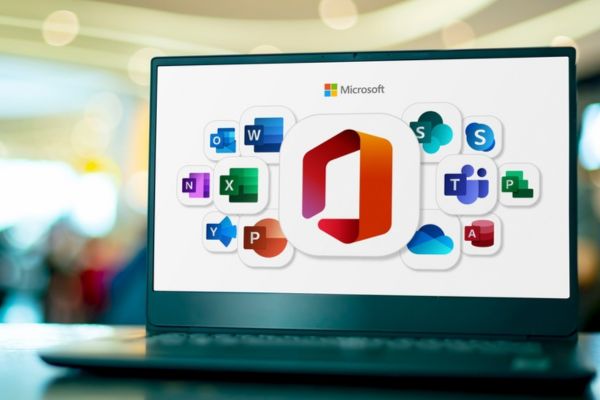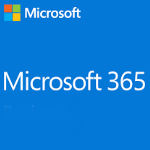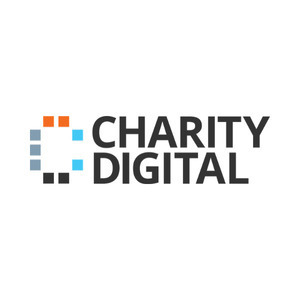Insights
INSIGHTS
All Topics
My Account
Charity Digital Exchange: How to use Microsoft Power software
We explore how charities can develop their own apps, automation processes, and data visualisation tools with the Microsoft Power Platform
We all know Word, Excel, and PowerPoint, but have you ever heard of the Microsoft Power Platform? This lesser-known Microsoft range prides itself upon its ability to let teams build custom tools to their own needs – all with little to no coding experience. Whether it’s the ability to build an app or visualise key data trends, the Power Platform may be just what your charity needs.
Subscriptions to Power Apps, Power Automate, and Power B.I. can be accessed at a discounted rate through the Charity Digital Exchange. In this article, we explore the various uses for charities.
How to use Power Apps
An “app”, short for “application”, is a set of code and instructions that tells a computer how to run and execute tasks around a specific function. Microsoft Power Apps gives team members the ability to create custom applications that address organisational challenges and modernise processes.
Microsoft provides training, templates, and a community forum for using Power Apps to help you develop the right tools for your organisation, and the Charity Digital Exchange offers a discounted Power Apps “per app” subscription, which can help individuals get started with the platform before adopting the tool on a different plan for broader team use.
Below we explore how different organisations have used the technology to become more agile, streamlined, and effective in their work.
Delivering services
Power Apps has been used in hospice care to improve processes. At the U.S. hospice care provider VITAS Healthcare, the enterprise engineering team used Power Apps to develop a suite of apps which have transformed their ability to treat terminally ill patients.
The suite, named “Emmy” after the hospice’s first ever patient, allows clinicians to see each other’s schedules, which means that they can answer patients’ frequent question of who and when their next visit will be.
The app suite also gives managers access to a “virtual patient waiting room”, where they can organise clinicians to see unscheduled patients in priority order. It also has scheduling automations, meaning that when a patient needs to be seen urgently, the appropriate clinician is notified. And it gives clinicians a direct line of communication with the patient’s primary caregiver and attending physician.
The Power Platform uses “low-code development”, meaning that apps can be developed by people of all skill levels. VITAS’s Chief Information Officer and Executive Vice President Patrick Hale reflects: “using low-code development allows us to rapidly create, iterate, and deploy solutions with greater impact”.
It also allowed the team to focus on the user experience, according to Emily Hill, V.P. of Strategy and Analytics: “This translates into delivering a better working experience for clinicians so that they can provide a higher level of care to our patients on an hourly basis.”
Charities could develop apps to support their particular services. As with VITAS, this may be a scheduling and notifying system to ensure the necessary frontline team members are organised and able to be at hand.
Data collection and reporting
Other organisations have developed apps in ways that support data collection and reporting.
For example, the beverage company Campari Group has developed an app which team members use on handheld tablets while mingling with consumers, using it to collect information about their preferences. This helps them to personalise sales, particularly with the flexibility offered by the fact that users can add sections and categories to reflect new findings.
For charities, developing an in-the-moment data collection system such as this could be useful within fundraising contexts.
Meanwhile, the flour supplier Ardent Mills developed its own range of apps to replace the use of Excel spreadsheets – which had been extremely time-consuming. This includes an app called “Cross Check” where data of the flour’s quality is entered directly into the app. The app does not allow users to submit the form unless all data is provided, meaning a lot of time is saved chasing down required information.
Another app developed at Ardent Mills, “Vehicle Inspection” requires truck drivers to sign their initials on the app in acknowledgement of inspections performed.
Developing “Cross Check” took a month for Deborah Romero-Reinig, a Business Analyst and citizen developer with no prior experience in programming or solution design. As her knowledge of Power Apps has advanced, she has enhanced and simplified the app, developed more apps, and is now able to build apps within a week.
As time is often scarce in the charity sector, this use of Power Apps could be valuable in the long-term due to its automation of lengthy and inefficient administrative tasks, as well as ensuring quality and compliance across operations.
How to use Power Automate
Automation is when machines or computers are used to reduce the amount of work done by humans and the time taken to do the work. Along these lines, Microsoft’s Power Automate streamlines repetitive tasks and business processes, increases efficiency, and reduces costs.
Microsoft has a free guided tour on how to use Power Automate, and an assessment tool to help you choose the best automation solution for your needs.
The Charity Digital Exchange offers a “per flow” plan, meaning that organisations can implement flows with reserved capacity that serve a team, department, or entire organisation without having to licence each user separately. It also offers a “per user” plan, which provides a user with rights to run an unlimited number of flows (within service limits) with the full capabilities of Power Automate.
Using expertise more effectively
The insurance comparison shopping and research tool QuoteWizard used Power Automate to speed up the process around matching tasks to people with the correct expertise. Originally, this was the job of a skilled engineer, meaning this team member was not utilised well and that big problems were caused to the team if he wasn’t available.
QuoteWizard decided to use Power Automate and A.I. Builder to build an automated, A.I.-powered engineering ticket routing and scheduling platform. This means that tasks are sent to engineers immediately, eliminating the previous bottleneck where it could take two hours each time. The engineer previously responsible for sorting tickets was also promoted to a role where his skills have a bigger impact on the business.
Joseph Springer, Senior Director of Technology at QuoteWizard, comments: “We’re leaning into Microsoft Power Automate to streamline processes and help engineers focus on higher-value work. Now we get more value from our team, and they derive more value from their work. It’s a win-win.”
The automation process was prototyped in four hours of active work over two weeks by Springer, who doesn’t have a data science background. This was then handed to QuoteWizards’ engineering team to transform into a full solution.
If able to develop a similar solution, charities could similarly automate admin-heavy workflows. See our Artificial Intelligence Hub to learn about using A.I. mindfully as a charity, and our on-demand webinar ‘Why your charity should embrace agile working’ for more inspiration.
How to use Power B.I.
B.I. stands for business intelligence: a system to uncover insights for making strategic decisions. Microsoft’s Power B.I. helps you visualise data, distribute findings to team members, access visualisations on the go, and enhance collaboration.
You can try before you buy using the free personal license provided by Microsoft. But if you would like to publish and share reports within your organisation, The Charity Digital Exchange offers a discounted Power B.I. Pro subscription for individual users with modern, self-service analytics for publishing reports and dashboards. Check out Microsoft’s Power B.I. training here.
Create transparency
Dairy company fairlife used Power B.I. to create reports of their supply chain and sales. This has saved their team seven hours of tedious work each time a report needs to be pulled together, with reports now being generated almost instantly.
They had two main goals with Power B.I.: ensure that each report told a story and to prioritise intuitive design. This was so that users could feel empowered by the data and easily understand it rather than feeling intimidated by it.
fairlife worked with Microsoft and a quick proof of concept to build the initial reporting system, and then to make it more comprehensive they partnered with Satori reporting, a software company that offers pre-built Power B.I. solutions.
The senior leadership team uses the reports to gain a high-level overview of how the business is performing against the annual plan. Power B.I. has also improved decision-making and helped the company to meet and exceed the goals and objectives it sets.
Although it is currently used for supply chain sales, fairlife is actively working on adding finance, sustainability, people, and H.R. reporting to their model. Charities could also use Power B.I. externally for impact reporting or fundraising reporting.
In particular, using Power B.I. to create data visualisations of how funds are being used could work well. When the COVID-19 pandemic hit, Kern County responded with a programme which provided no-charge P.P.E. support, forgivable loans for small businesses, and non-profit grants.
They used Power B.I. to create a full interactive ‘Kern Recovers’ dashboard. Mac Avancena Jr., Chief Information Officer at Kern County, reflects: “We supported 938 businesses across 255 industries and our average [small business] loan was $30,300. So from a constituent point of view, think about how empowering that is.
"That level of transparency…fills a void that people naturally have when it comes to what government is doing for them. It’s really exposing and democratising…how we’re making investments on their behalf.”
To learn about providing financial transparency as a charity, check out ‘How your organisation can build trust’.
More on this topic
Related Content
Recommended Products
Our Events
Charity Digital Academy
Our courses aim, in just three hours, to enhance soft skills and hard skills, boost your knowledge of finance and artificial intelligence, and supercharge your digital capabilities. Check out some of the incredible options by clicking here.

























